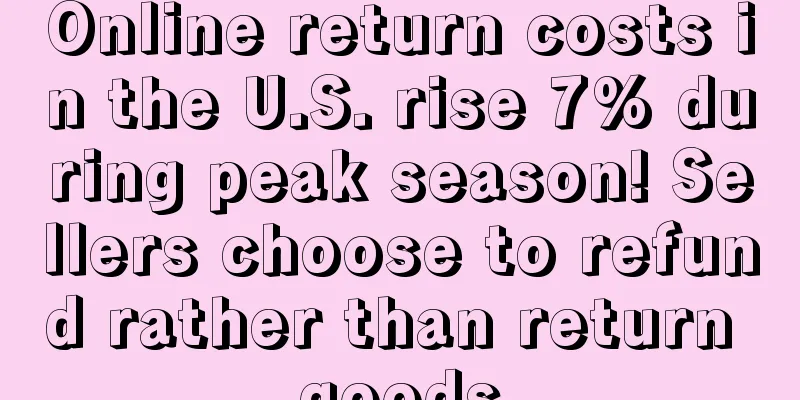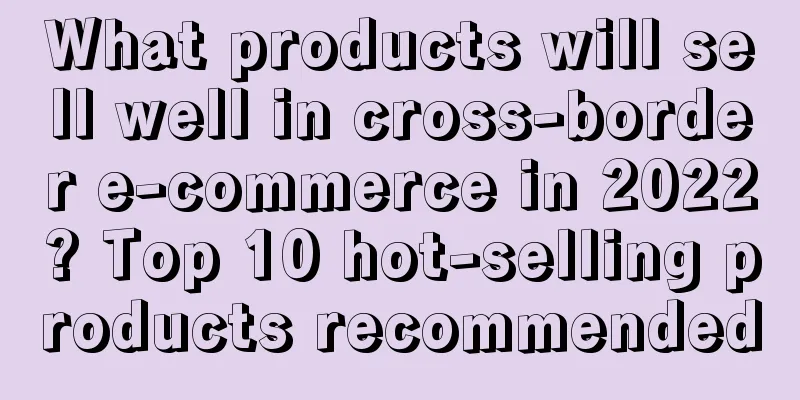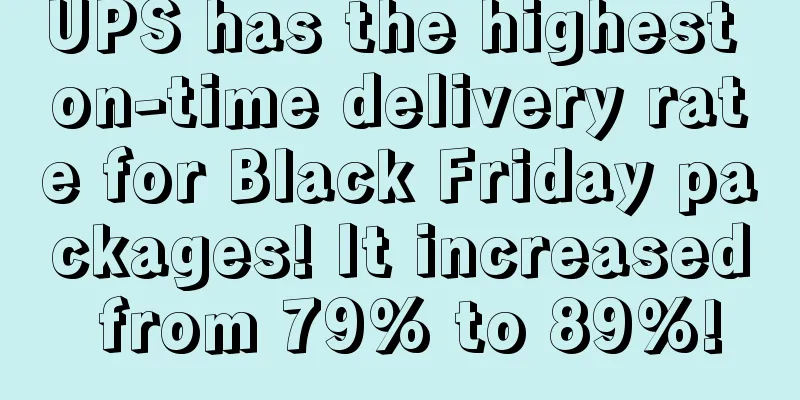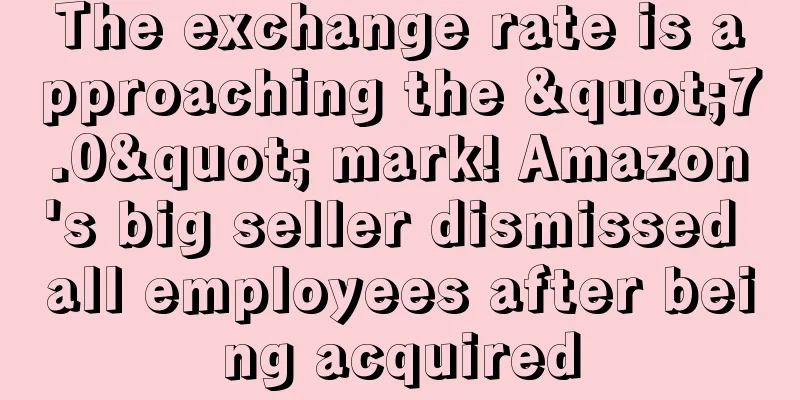10 Product Selection Tips for Amazon Sellers
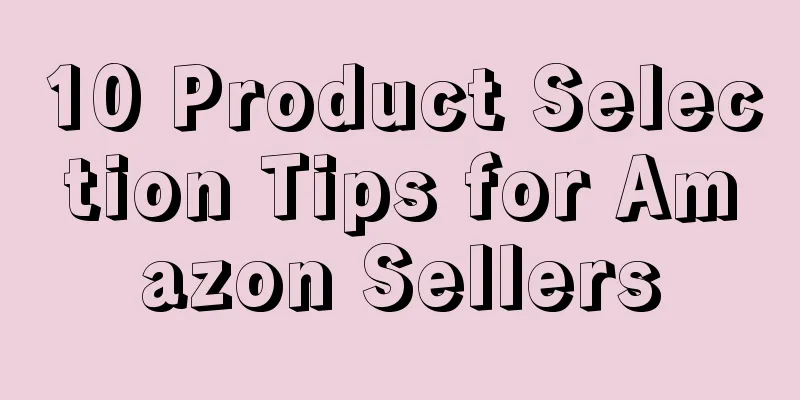
|
Do you also have the idea of entering the e-commerce industry and opening a store on Amazon? You may have heard many success stories of friends or relatives, read some related reference books and articles, and even joined some Amazon seller forums or groups, but many people are just like this, doing a lot of homework in private, but are not ready to take this big step. When asked why, most sellers said that the most difficult part is finding the most suitable products for Amazon FBA shipment. Therefore, this article collects and organizes some product selection suggestions for sellers' reference. When you are selecting products, you should look for products that consumers want to buy. So first, you need to find out what kind of products will make consumers want to buy them instantly, it may be beauty products recommended by beauty blogger Kylie Jenner; or new toys that children want for their birthdays; or fitness equipment recommended by LeBron James to keep in shape. In other words, the product has to be trending or popular. But in reality, it’s hard to predict product trends. For example, who knew that fidget spinners would become a hot-selling product in 2017? The good news is that there are a lot of tools out there that can help you guess and analyze trends. So what are those tools? The first thing I have to mention is Google Trends. With Google Trends, you can track the search volume for any keyword. This can roughly infer consumer demand for products. If someone is searching for a product online, it is likely because they want to buy it. Take a look at the search trends for fidget spinners over the past five years: Have you noticed? Since the beginning of 2017, there has been a dramatic increase in searches for the product (i.e., consumer interest in the product). Google doesn’t explicitly show how many times a term has been searched, so all search results are relative. As you can see, the number of searches for fidget spinners in mid-2017 was 100 times what it was in 2015. In short, if you started selling fidget spinners online or on Amazon in early 2017, you had a good chance of hitting it big. But as you can see, interest in fidget spinners exploded in early 2017, but then dropped off dramatically by the end of the year. The fate of fidget spinners became the same as other popular products in the past: popular for a while, but quickly forgotten. This shows that it is important to seize opportunities, but don’t blindly follow the trend and choose popular products. Remember, it takes time to open a store on Amazon for a long time and to be successful. The probability of getting rich overnight is very small. Having said all that, the bottom line is: no matter what, you have to find a way to sell popular products, but at the same time you have to make sure that these products continue to be popular with consumers when they are sold in your Amazon store. When you’re thinking about what products you should sell on Amazon, the second tip is to sell products you’re familiar with. Of all the factors that determine your success on Amazon, perhaps the most important is the quantity and quality of reviews in your store. In other words, to be successful in your store, you need to find products that Amazon shoppers will love. However, the best way to understand whether consumers will like your product is to ask yourself whether you like your product. This requires you to stand in the perspective of consumers and understand the quality of your product. The premise is that you must first have a basic understanding of your product. In short, if you would buy a product in your store yourself, then it is likely a good product and you can recommend it to consumers. If you don’t buy it yourself, then it’s better not to put it on the shelves. For example, suppose Frank, a 46-year-old from Milwaukee, USA, wants to open a store on Amazon. Frank drives a Ford F-150, has season tickets to the Green Bay Packers, and loves to drink beer with friends after get off work on Fridays. So what types of products should Frank sell on Amazon? Well, let's think about the types of products he shouldn't choose. Frank probably wouldn't sell maternity clothes or vegan food, right? In short, know yourself and sell products on Amazon that you are familiar with. In terms of product research, Jungle Scout, Unicorn Smasher, AMZScout, etc. are all good tools. Remember the example above? Let’s say Frank is ready to open a store on Amazon. It is recommended that he launch a line of football equipment instead of vegetarian food. Take the example of using AMZScout for product research. Frank can figure out which products he should sell on Amazon simply by trying to search for a few different product categories. At first, Frank tried to search for “football tees”, but it turned out that this was not a good niche: Next, Frank tried to find “football display cases” (as shown in the picture), which seemed like a niche product that would be profitable: After doing product research and obtaining detailed information about the niche product listing, shipping costs, product costs, and Amazon fees, he can then confidently start opening a store on Amazon. The fourth suggestion is to sell something that you can turn into a series of products, which doesn’t mean you have to release a whole series of products right away. The risk is too great because you can’t be completely sure that your product will be in demand, let alone produce a full range. In addition, you can’t be sure that your suppliers can deliver on time. Furthermore, labeling products and sorting multiple SKUs can be problematic. For all of these reasons, the best approach for any seller just starting out on Amazon is to just launch one product, see how it performs, and then expand your business. Still, even in the early stages, you have to start thinking about how to expand your product catalog. Why? When you sell on Amazon, you’ll find that every small order adds up and makes a huge difference in the end. For example, if your first product variation is selling well and you want to introduce a second variation, you can refer to previous product reviews. Generally speaking, if you have done a lot of paid advertising for your product before, you will know which type of advertising works better when you launch similar products. In addition, if you launch similar products, you don’t have to take brand new product photos. So, when you’re reviewing your first product, you should be thinking about your second, third, fourth, and even 50th product variants. These variants can be similar to your initial product, but not identical. The point is, when selecting products, you should be thinking about the entire product line, not just unrelated individual products. These product variations don’t have to be completely different from your first product. You can simply tweak the shape, color, or size of your product, or add a core feature to the variant product. In practice, you’ll find that the smaller the adjustments you make, the easier it will be for the supplier you work with to make adjustments to the product. In summary, when you’re thinking about what products to sell on Amazon today, think about products you might want to sell in the future. What are the best-selling products? They are those that solve obvious problems for customers. So the fifth tip is: determine what are hot products by understanding the needs of Amazon consumers. Most startup product development goes like this: the company has an initial idea for the product. Then, the company communicates with some customers who may use the product to get feedback. Then the company adopts the customer feedback and produces the product. Finally, the customer buys the product produced by the company. If everything goes well, the product development is successful. If you're selling products online, doing market research seems much more difficult. After all, in the e-commerce industry, you are unlikely to meet your customers in real life. In a sense, your customer is just a name, a shipping address, or an order number. So how can you collect feedback from your customers? The answer is review. Amazon has built a huge database of user feedback, the Amazon Seller Rating System (customer review system), waiting for sellers like you to discover. The system is not built on the basis of sellers; it is designed to help other buyers buy products with information open to the public. In addition, before you launch your first product, you will not be able to get feedback on the product itself, but rather feedback from similar products. Even so, customer reviews can still be a wealth of information for new Amazon sellers. More specifically, they are a great source of inspiration and idea generation for those who are searching for popular products on Amazon. Let’s go back to Frank’s example. Frank found a product he was familiar with and with the help of product research tools, he learned that the football display box was a potential niche product. So what should Frank do next? What type of football display cases should he sell? You can get some ideas from customer reviews. If you type "football display cases" on Amazon, the following results will appear: Notice that on the first page of search results, there is a product called Ultra Pro Football Clear Square Holder, but it only has a 3.5-star customer rating. This means that even though customers are not completely satisfied with the product, it is still selling well. If you are selling similar products, if you can improve on some of the flaws of the existing product, your product will be successful. With that in mind, you can look at the reviews for this product, especially the negative ones. You’ll see something like this: Customers have some dissatisfaction with this product, mainly in the following aspects:
From the above example, we can see that through reviews, Frank can clearly know what kind of football display box customers want. They hope to receive the goods intact, preferably of good quality and easy to install. Now Frank knows what kind of football display box will be popular on Amazon. The sixth suggestion is to choose products with "sales depth". So what are products with "sales depth"? The easiest way to see how a product is selling on Amazon is to look at the Amazon Best Sellers Rank (BSR). A product’s BSR is located in the middle of the product listing details page. For example, the following is the BSR of a football display box: Amazon doesn’t disclose exact sales information of its products to the outside world, but the Best Sellers Rank (BSR) can give you a good idea of whether a product is selling well. The lower the BSR number (i.e., the closer it is to 1), the better the product is selling. Therefore, when you browse the product catalog to find a best-selling product on Amazon, you can refer to the BSR of the product. But not only that, there are many niche products that are "unbalanced". Why do I say that? Because some sellers can "crush" their competitors with just one product. But there are other niches where there are a few different sellers offering different products, all with low BSRs, and therefore selling multiple products every day. These are the so-called “sales depth” products, which are categories or products that most sellers have a chance of successfully selling. Generally speaking, these are the best products a seller can sell. If you're looking for hot products during the winter months, you'll see Santa costumes, Christmas lights and new calendars everywhere. So you think about it and decide that you should sell plastic reindeers on Amazon in 2019. Don’t! Cancel the purchase order before those little reindeers sit in your warehouse and can’t be sold. Why? Products like these have a strong seasonality. To put it nicely, they sell better at certain times of the year than at other times of the year. Seasonal products include not only Christmas-related products, but also beach towels, sunscreen, and swimming trunks; or rakes, leaf blowers, and jack-o'-lanterns; or Valentine's Day cards and red roses. When you are selecting products, consider whether the product has seasonal characteristics. Try not to touch the product before you understand it. There are two reasons for this. First, if a seasonal product is in its peak sales season, you can easily be fooled into thinking that the product is more popular than it actually is. Second, even if you know exactly how popular a product is, it can be difficult to manage your inventory because there are peak and off-peak seasons throughout the year. Another great way to find hot product ideas is to check out Amazon’s best-selling product catalog. Sellers can access the site at www.amazon.com/gp/bestsellers. You can see that the interface has a catalog of the best-selling products on the website, which is classified by product category. For example, the following is a catalog of sports and outdoor products: You can also change your perspective and open Amazon's "Movers & Shakers" best-selling product category. On the page, you can see the best-selling products in the past 24 hours, and you may see that the demand for previously ordinary products has suddenly surged. Looking at the best-selling product list is a great way for sellers to discover popular products early and get in on the action first. If you want to get inspiration from this catalog, you will know why the product is so popular. But relatedly, seasonality is the biggest factor influencing the best-selling product list. Although ski goggles, thermos bottles, and flannel shirts are popular items in the winter outdoor sports category, sellers, you probably don’t want to launch a new line of flannel shirts in May. Therefore, if you are going to use these product categories as a guide, especially through the Amazon Rising Stars, make sure that the upward trend you find is sustainable and not a short-lived trend. The 9th suggestion is to find products that are not too popular to sell. Why? Amazon has allowed third-party sellers to sell products on its platform for many years. Since then, and especially in the past few years, the market has become highly competitive and product updates have been rapid. This means that the most popular niche products are already quite saturated. Sometimes this is because a big brand has already taken over the market. Or there is a third-party seller who has already set a precedent of success and it is difficult for new sellers to catch up. Or, Amazon has so many new sellers flocking to the same niche that there is not much room for new entrants to develop. To sum up, it is better to target a niche market than a mass market. Let's put it this way, would you rather take a share of the mass market or dominate the niche market? This choice question seems simple, but it is actually very difficult for sellers, and the answer given by Amazon is increasingly leaning towards the latter. So how do you find these niche markets? Google and Amazon have already provided you with a solution. Amazon and Google now both offer autofill in their search boxes. This means that as you type in the search box, the search box will automatically fill in the search terms you might be about to type. The autofill feature is formed by other people's multiple searches for that keyword. With the autofill feature, you can know exactly what your customers want to buy (especially Amazon customers). Let’s say Frank has successfully launched a football display case and now wants to launch another similar product. What Frank can do is type “display case” into the Amazon search bar and see what comes up. Here’s what he finds: Look at the auto-populated keywords and extract all the valuable information from them. Amazon shoppers also seem to be looking for display boxes for football helmets, baseballs, medals, and ribbons. It takes a little time and some digging to determine which of these niches has the least competition and the most opportunity. But it’s a good idea to do a simple search on Amazon and look at the auto-populated content that pops up. The last piece of advice is to test your product before launching it. So far in this article, we have explored many different ways to determine if a product will sell well on Amazon by observing competitors. We have discussed how to look at competitors’ Best Seller Rankings and Soaring Lists. We have also discussed how to look at existing product listings to determine how to improve existing products. But in reality, there is no substitute for testing product popularity yourself. In other words, instead of letting Amazon tell you the popularity of your product with hard data, it is better to find out for yourself whether there is a market demand for your product. After you launch a product on Amazon and before the first customer decides to buy your product, you can test what problems may arise with the product listing to avoid customer dissatisfaction with the product. Let’s say you’ve done some preliminary research and think your product could sell well on Amazon. At this point, you can validate your hypothesis in three ways:
There are no limits to how you can validate your product. If you want to validate your idea a little more before selling it on Amazon, there are plenty of other low-cost tools on the market that you can use. Text✎ Zhu Meiying/ Statement: When reprinting this article, the title and original text must not be modified, and the source and original link must be retained. |
>>: The 10 Best Repricing Tools for Amazon Sellers
Recommend
How to improve payment rate on independent websites? Sellers must know!
For many foreign trade independent sites, after c...
The in-transit shipments of goods that exceed the shipping limit are cancelled. What is the next step?
Previously, the old method was used to reopen the ...
Google announces more powerful search features for retailers!
<span data-shimo-docs="[[20,"获悉,据外媒报道,谷歌于周...
Big changes to the review mechanism! Is Amazon's new feature useless?
Is Amazon launching new AI features? Can consumers...
Malicious buyers blackmailed and threatened to "destroy the store if you don't pay!"
Just after the Shopping Festival, everyone was ea...
What is Souq? Souq Review
Souq.com is the first online shopping website in t...
What is Sumo? Sumo Review
Sumo is a sharing button service for independent w...
Amazon’s latest announcement: illegal products cannot be displayed!
Amazon recently released an announcement in the b...
New regulations for product packaging in 2025! Non-compliant products will be destroyed immediately!
In 2025, Amazon has new regulations! Starting from...
What is a Return Request? Return Request Review
Return Request refers to a return request. If the ...
Temu's exclusive crib rails are being recalled due to suffocation risk
It is learned that the U.S. Consumer Product Safet...
It’s settled! The price of US trademarks will increase and will be officially implemented on January 2 next year!
Since June this year, the news of the price incre...
What is Amazon manual advertising? Amazon manual advertising review
Amazon manual advertising is a form of advertising...
What is Amazon Map Tracking? Amazon Map Tracking Review
Map Tracking was launched in November 2017. Amazon...
There is a risk of swallowing batteries! CPSC recalls more than 82,000 projector flashlights!
It is learned that the U.S. Consumer Product Safet...
